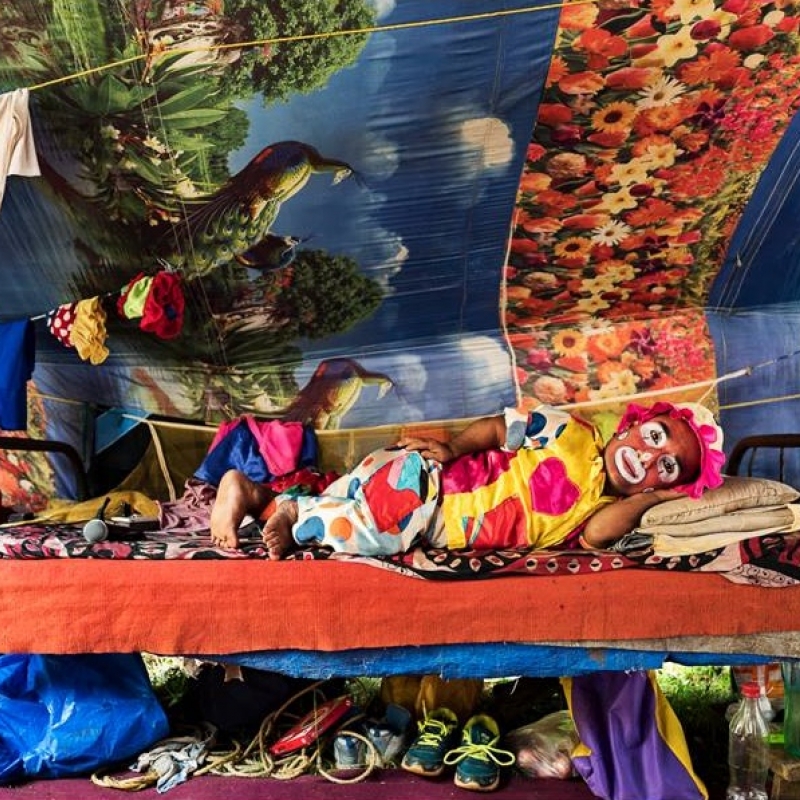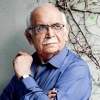The circus from our childhood has changed in many ways. Prof B.N. Goswamy writes of the circus-centred work of a contemporary Indian photographer, Vivek Desai, who provides some rare insights into the lives of the performers behind the spotlight. (In pic: A clown taking a nap on a ramshackle bed; this photo is part of Vivek Desai’s work called ‘Circus and Me’; Photo Courtesy: Satya Art Gallery/Facebook)
This article appeared originally in The Tribune, Chandigarh, under the title ‘It’s lonely beyond the glitter’, and is reproduced here with permission.
From the boards pale Harlequin
First salutes the spectator
Sorcerers from Bohemia
Fairies sundry enchanters…
— Guillaume Apollinaire, French poet, 1909
For some odd reason, the circus has been on my mind lately: not because of some childhood memories, of which I have some but not many. It is because I have been looking at Picasso’s wonderful work that belongs to his ‘Pink Period’, pre-dating Cubism, and I am struck by his fascination for the world of acrobats and clowns and trapeze artists. He does not use the word circus anywhere in the captions to his paintings of course, but the French word ‘harlequin’ comes in ever so often, as does ‘saltimbanque’. Itinerant and street performers interested him, and he explored their world in his art, in his own fashion, filled as it was with impermanence and that tremulous mixture of laughter and sadness which he tapped into with perfection. It was not a world of trained horses and tamed tigers, or of ring-masters and sorcerers that he entered through his work, but of humanity living on the edge, as it were.
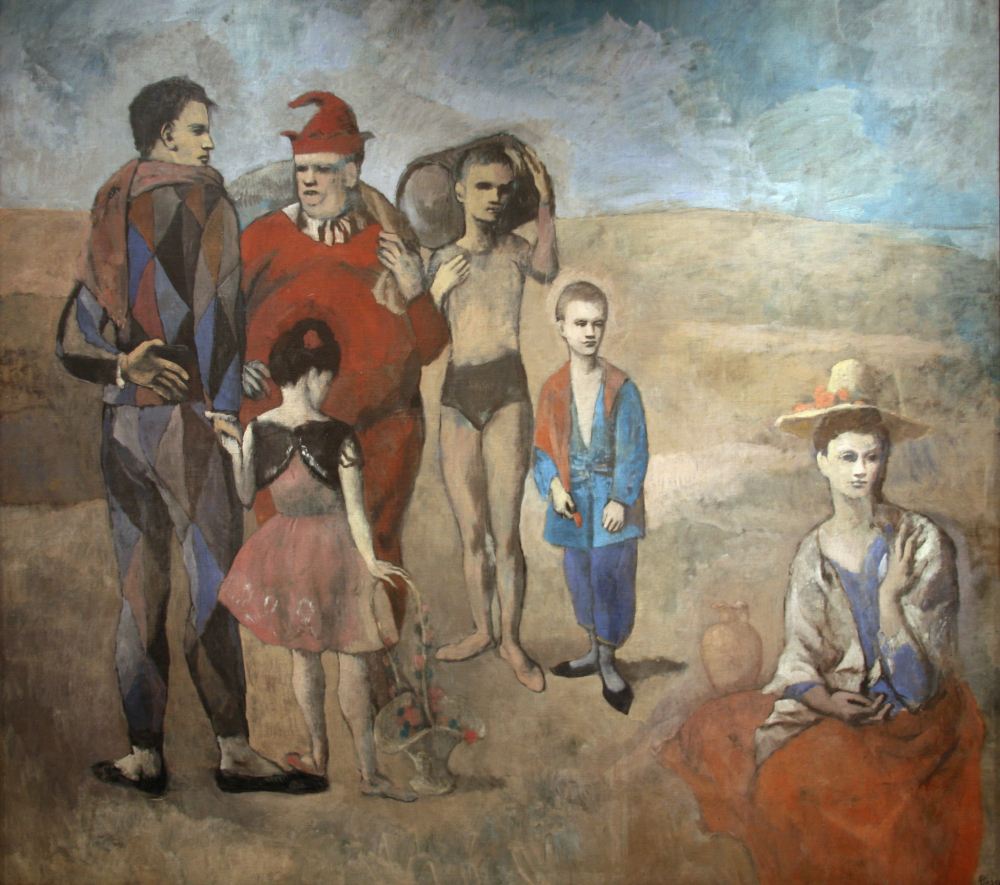
There were others of the times—the French poet Apollinaire, who exercised such an influence on artists and art-movements of his age, for instance; or the ‘pointillist’ painter, Seurat, also French, who caught in some of his works the incredible energy of equestrian performers—who come to mind in the context of the circus. But my own unexpected interest in circus owes itself also, at least in part, to the currently showing film that is making such news: The Greatest Showman, woven around the life of P.T. Barnum, founder of the famous Barnum & Bailey Circus in America. However, in the midst of all this, what I am writing on here is not the ‘Big Tops’ of Europe or America: I write here of the circus-centred work of a contemporary Indian photographer, Vivek Desai, a small book on whom arrived, unannounced, in my mail the other day, sent by a young friend: Anuj Ambalal. I had never heard of Vivek Desai till now, but this little book, based on a show of photographs titled ‘Circus and Me’, curated jointly by Navroze Contractor and Anuj—both gifted photographers themselves—I found to be full of compelling images.
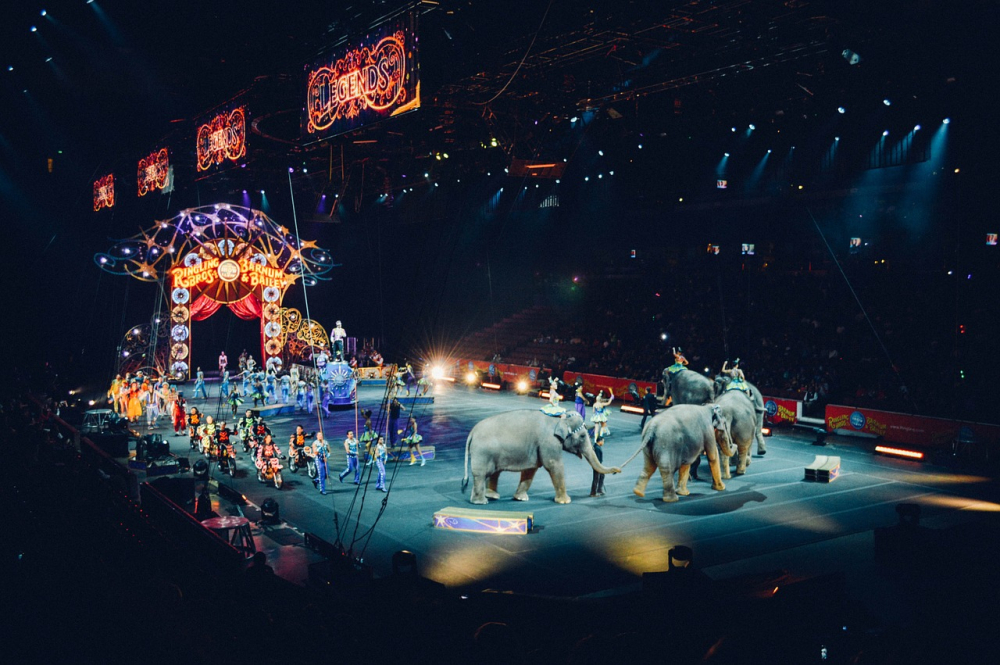
In his short essay in the book, Vivek speaks of how he became hooked to the circus from his childhood, and how as an adult he went about, after having abandoned the idea of becoming an investigative journalist, entering the world of the ‘artistes’ of the circus as an intimate, an insider. By the time he committed himself to this world, the circus, as one knew it once, had changed in many ways: wild animals had virtually gone out of the repertoire, there were no freaks to be shown, truly dangerous stunts were on their way out. But it still offered a spectacle, whether it was the Gemini, or the Great Bombay, or the Amar, or the Great Rayman. Still around, however, were gymnasts and acrobats and skimpily clad ‘circus ladies’, and clowns. And what interested Vivek was to learn about the way they lived: constantly on the move; in private life, shorn of all glamour and showmanship; perpetually insecure in their skins in so many ways. This, however, needed to be done not in words, but through images. So, Vivek merged himself in the crowd of performers. It was not easy to begin with: ‘No Photographs’ inside the private tents was the stern rule read out to him. But, slowly, he got over that hump. And what went on the show recently was a small part of what he was able to document: but then ‘document’ perhaps is not the right word to use here, since he was in some manner ‘co-living’ that experience.
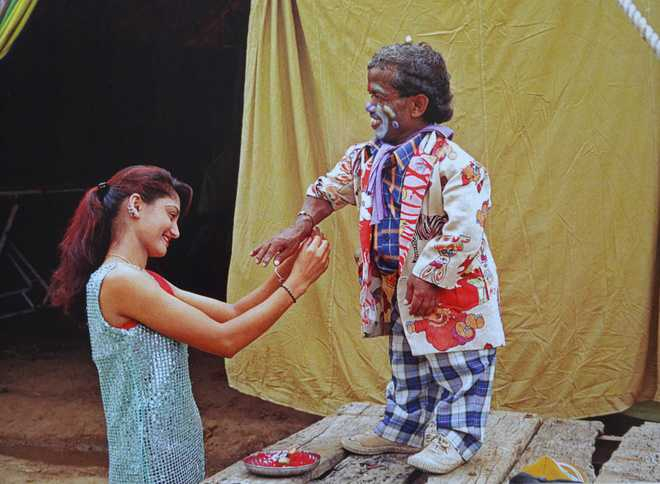
What one sees through Vivek’s eyes are some rare sights: a sprightly young woman, a gymnast perhaps, tying a rakhi-thread on the wrist of a midget clown: evidently a fellow-performer; two lasses peeping into the main ring, waiting for their cue to enter; a clown taking a nap on a ramshackle bed surrounded by an incredible mess of things like shoes and boxes and curtain strips and broken fans. At one point one sees workers fixing wires standing on a shaky tent top; at another young girls in a dormitory like tent stretched out on beds, one of them playing with her infant. There is warmth in these images and an invitation asking the viewer to enter a rusty but different world.
Also read | Art N Soul: How the Louisa Parlby Album Depicts 18th Century India
Long years ago, the Austrian poet, Rilke, sat down to write on a now celebrated ‘Pink Period’ painting of Picasso: Family of Saltimbanques. The painter had seen them perhaps, he wrote, as “a symbol of human activity… always travelling with no fixed abode… even a shade more than the rest of us”. Possibly therefore, he said, he had placed them in a desolate desert landscape, “standing on a ‘threadbare carpet’ to suggest the ultimate loneliness and isolation of Man in this incomprehensible world, practicing their profession from childhood to death as playthings of an unknown will …” When Vivek captures an acrobat, all dressed up in his pristine white, figure-hugging costume, sitting all by himself in a chair outside a virtually vacant tent, ready for action but staring into nothingness, is he speaking of isolation, perhaps even the meaningless-ness of it all?
This article has been republished as part of an ongoing series Art N Soul from The Tribune.
